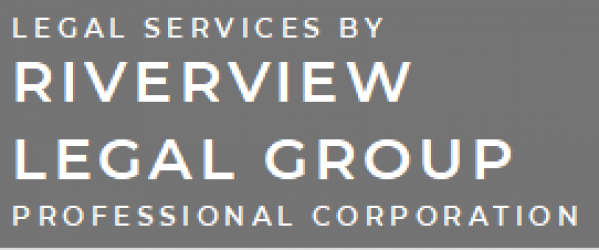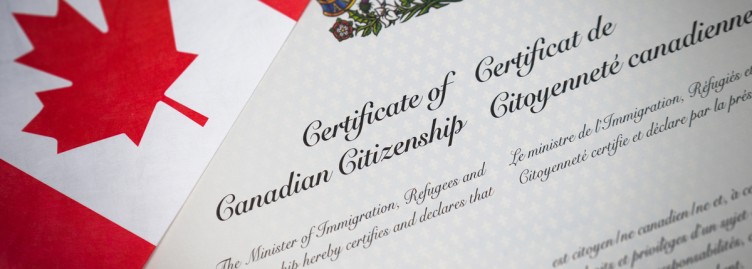Overview
Immigration is an important topic for paralegals. It’s about money. Fees for immigration applications can range between $6,000 to $30,000 depending on a number of factors. Immigration is big business and there is no principled reason why paralegals should be excluded.
To give you a sense of how big this business is; in the year 2022, Canada received 231,178 applications for permanent residency[1]. In that same year, Canada also received 81,785 Asylum Claimants[2]. That is a whopping 312,963 applications that are being made to Immigration, Refugees and Citizenship Canada. Assuming the average application is worth $6,000 in legal fees, the total market share is worth just over 1.8 billion dollars.
The Immigration & Refugee System
There are several categories of immigration applications including:
- Express Entry
- Provincial Nominees
- Atlantic Immigration Program
- Start-up Visa
- Rural and Northern Immigration Pilot
- Temporary Resident to Permanent Resident Pathway
- Economic Mobility Pathways Pilot
- Family Sponsorship
- Quebec-selected Skilled Workers
- Caregivers (immigrate by providing care for children, the elderly or those with medical needs, or work as a live-in caregiver)
- Self-employed (Immigrate as a self-employed person in cultural or athletic activities)
- Agri-Food Pilot (Immigrate by working in specific agri-food industries and occupations)
- Permanent Residence Pathways for Hong Kong Residents (two pathways to permanent residence for eligible Hong Kong residents who are currently in Canada.)
In addition to the above immigration classes, a person can also apply as a refugee.
The Application Process
Both immigration applications and refugee claims are based on the same principle process. First, the applicant or refugee files an application with Immigration, Refugees and Citizenship Canada. Once the application has been submitted, then Immigration, Refugees and Citizenship Canada decide whether to accept or reject the application. If the application is approved, then documents are issued and the applicant is free to enter or remain in Canada according to the terms of their specific program. If the applicant’s claim is rejected, then they may appeal the decision to the Immigration and Refugee Board of Canada,[3] the (“IRB”).
The Immigration and Refugee Board of Canada (IRB) is Canada’s largest independent administrative tribunal. It is responsible for making well-reasoned decisions related to immigration and refugee matters efficiently, fairly, and in accordance with the law. The IRB decides, among other responsibilities, determines which of out of the thousands of claimants who come to Canada each year require our country’s protection.[3]
A Two-Part System
The Immigration and Refugee System has two parts,
- An initial application made to Immigration, Refugees and Citizenship Canada, and if a claim is rejected,
- An appeal to the Immigration and Refugee Board of Canada.[3]
How the Paralegal Scope of Practice impacts Immigration and Refugee Work
By-Law 4[4] of the Law Society of Ontario defines the paralegal scope of practice. The Paralegal scope of practice is defined in part as:
6.(1) In this section, unless the context requires otherwise,
…
“party” means a party to a proceeding;
“proceeding” means a proceeding or intended proceeding,
…
(d) before a tribunal established under an Act of the Legislature of Ontario or under an Act of Parliament, or
…
(2) Subject to any terms, conditions, limitations or restrictions imposed on the class of licence or on the licensee and subject to any order made under the Act, a licensee who holds a Class P1 licence is authorized to do any of the following:
1. Give a party advice on his, her or its legal interests, rights or responsibilities with respect to a proceeding or the subject matter of a proceeding.
2. Represent a party before,
…
iv. in the case of a proceeding before a tribunal established under an Act of the Legislature of Ontario or under an Act of Parliament, before the tribunal, and
…
4. Select, draft, complete or revise, or assist in the selection, drafting, completion or revision of, a document for use in a proceeding.
5. Negotiate a party’s legal interests, rights or responsibilities with respect to a proceeding or the subject matter of a proceeding.
6. Select, draft, complete or revise, or assist in the selection, drafting, completion or revision of, a document that affects a party’s legal interests, rights or responsibilities with respect to a proceeding or the subject matter of a proceeding.
What is important to understand is that the paralegal scope of practice is to be strictly interpreted, meaning that if an activity is NOT in the defined scope then the activity is not authorized. Before we can dive too deeply into the paralegal scope it is also important to understand the differences between “solicitor” and “barrister”. In Canada, a lawyer is both a barrister & solicitor but each has its own unique requirements and obligations.
A solicitor is a qualified legal practitioner who can take instructions from clients and advise on necessary courses of legal action. Clients can range from individuals and groups to public sector organizations and private companies. Solicitor work generally consists of preparing legal documents for actions not intended for court proceedings, such as transferring real estate or preparing contracts. Barristers tend to specialize in courtroom advocacy and litigation, drafting legal pleadings, giving expert legal opinions, and researching the theory and history of law.
The core issue with preparing applications for immigration or refugee claims is that the two classes of applications are not automatically intended for use in a proceeding. If an application is denied, then a proceeding can be brought before the Immigration and Refugee Board of Canada[3]. Once a matter has been put to the IRB, or a client intends for an application to become the subject of an IRB hearing then the matter falls squarely within the paralegal scope of practice.
In this sense, the preparation of applications for immigration or refugee claims is best understood as solicitor work. Applications before the IRB are best understood as the work of barristers. Making that distinction illuminates what changes are required to expand the paralegal scope of practice.
An Argument for Expansion into Immigration
It is common sense that if a legal professional has the skills, knowledge, and abilities to defend an application before the IRB then that same legal professional has the skills, knowledge, and abilities to prepare the initial application. It simply makes no sense to deny paralegals the opportunity to participate in the initial stages of the immigration process when the reality is that paralegals are often employed to clean up the mess left by those who prepared the initial applications.
Changes as a Bencher
As an elected bencher, the first thing I would do is (with the required 21-day notice) bring a motion on the floor to Convocation to amend the paralegal scope of practice as outlined below.
Motion to Clarify and Amend the P1 Scope of Practice
This is a motion to amend By-Law 4 as follows:
1) Under section 6. (1) add the following definition(s):
“limited-scope solicitor task”, means the preparation of a legal document that could become the subject of a proceeding as defined by this section.
“limited-scope solicitor advice”, means to give an individual advice on his, her or its legal interests, rights or responsibilities with respect to limited-scope solicitor tasks.
2) Under section 6. (2) add the following section(s):
7. Give an individual advice on his, her or its legal interests, rights or responsibilities with respect to a limited-scope solicitor task.
8. Select, draft, complete or revise, or assist in the selection, drafting, completion or revision of, a document that is connected to a limited-scope solicitor task.
9. Negotiate a party’s legal interests, rights or responsibilities with respect to a limited-scope solicitor task.
10. For additional clarity, limited-scope solicitor task(s) include, but are not limited to
a) Select, draft, complete or revise, or assist in the selection, drafting, completion or revision of applications or other connected documents under the Immigration and Refugee Protection Act
b) Select, draft, complete or revise, or assist in the selection, drafting, completion or revision of leases or other connected documents under the Residential Tenancies Act, 2006
References
1.0 1.1 Applications Received for Permanent Residency, <https://www.cic.gc.ca/opendata-donneesouvertes/data/Open Data – OPS PR Intake en.xlsx>, retrieved 2023-01-26
2.0 2.1 Asylum Claimants – Monthly IRCC Updates – Canada – Asylum Claimants by Claim Office Type, Province / Territory of Claim and Claim Month, <https://www.cic.gc.ca/opendata-donneesouvertes/data/EN_ODP-Asylum-OfficeType_Prov.xlsx>, retrieved 2023-01-26
3.0 3.1 3.2 3.3 3.4 Immigration and Refugee Board of Canada, <https://irb.gc.ca/en/Pages/index.aspx>, retrieved 2023-01-26
4.0 4.1 Law Society of Ontario – BY-LAW 4, <https://lso.ca/about-lso/legislation-rules/by-laws/by-law-4>, retrieved 2023-01-27


